Technical Solution for Monitoring Climatically Active Gases Using the Turbulent Pulsation Method
Abstract
:1. Introduction
- Development of a prototype for a multicomponent gas analyzer;
- Selection of discrete and analog input modules to receive unified signals from sensors;
- Design of a data transmission system in a multicomponent gas analyzer.
2. Materials and Methods
- Additional Dimension. The BME680 introduces an additional dimension—air quality assessment. This sensor gauges gas concentrations such as nitrogen oxides, ammonia, ethanol, and carbon dioxide to evaluate air quality. This capability is absent in BMP280 and LPS22HB.
- Enhanced Precision. The BME680 exhibits superior humidity, pressure, and temperature measurement accuracy compared to BMP280 and LPS22HB. It also delivers enhanced measurement stability with reduced noise in output signals.
- Wide Measurement Range. The BME680 covers a wide measurement range—from 0 to 100% for humidity, from 300 to 1100 hPa for pressure, and from −40 to +85 °C for temperature. This wide range allows the sensor to be used for a variety of purposes.
- Multiple Interfaces. The BME680 supports a variety of interfaces, including I2C, SPI, and UART, rendering it compatible with an array of microcontrollers and devices.
- User-Friendly. Compact and lightweight, BME680 facilitates easy integration into diverse systems. Additionally, it consumes less power, making it suitable for energy-constrained mobile devices.
- Extensive Measurement Range. With a measurement range from 0.5 m/s to 30 m/s, the SM5386V accommodates a wide spectrum of conditions.
- High Precision. The SM5386V ensures accurate air velocity measurement, down to 0.1 m/s, making it suitable for scientific research.
- User-Friendly. Compact and easily interfaced with microcontrollers through analog inputs, the SM5386V stands out, while RK100-02 and BGT-FSI-RS485 require additional hardware for signal processing.
- Reliability. The SM5386V boasts minimal noise and an extended service life, enhancing its reliability. In contrast, RK100-02 and BGT-FSI-RS485 may encounter noise-related issues and signal processing requirements.
3. Results
- Measurement and recording of greenhouse gas concentrations;
- Measurement and registration of atmospheric air temperature;
- Measurement and registration of wind speed and direction in the vertical plane;
- Measurement and registration of atmospheric air humidity;
- Measurement and registration of atmospheric air pressure.
3.1. Connecting Sensors of the Device Prototype to the Control Board
- Connect the +V pin of the sensor to the 5 V pin on the Arduino Mega 2560.
- Connect the GND pin of the sensor to the GND pin on the Arduino Mega 2560.
- Connect the AO analog input pin of the sensor to the AO pin on the Arduino Mega 2560.
- Connect the Rx pin of the sensor to the Rx pin on the Arduino Mega 2560.
- Connect the Tx pin of the sensor to the Tx pin on the Arduino Mega 2560.
- Connect the VCC pin of the sensor to the 5 V pin on the Arduino Mega 2560.
- Connect the GND pin of the sensor to the GND pin on the Arduino Mega 2560.
- Connect the SDA pin of the sensor to the SDA pin on the Arduino Mega 2560.
- Connect the SCL pin of the sensor to the SCL pin on the Arduino Mega 2560.
3.2. Software and Hardware Implementation of the Device Prototype
3.3. Testing
4. Conclusions
Author Contributions
Funding
Institutional Review Board Statement
Informed Consent Statement
Acknowledgments
Conflicts of Interest
References
- Zawilski, B. On evapotranspiration and eddy covariance measurements corrections. Biogeoscience Discuss. 2020. [Google Scholar] [CrossRef]
- Zhao, Y.; Zhao, Y. Covariance-on-Covariance Regression. arXiv 2022, arXiv:2212.09866. [Google Scholar]
- Rouzkhosh, M.; Jaafarzadeh, N.; Varshosaz, K.; Orak, N.; Dashti, S. Neural network to quantify the amount of greenhouse gases produced by flue gases affecting climatic conditions in Iran’s southern areas. J. Pet. Sci. Eng. 2022, 221, 111224. [Google Scholar] [CrossRef]
- Zhang, K.; Wang, Y.; Mamtimin, A.; Liu, Y.; Gao, J.; Aihaiti, A.; Wen, C.; Song, M.; Yang, F.; Zhou, C.; et al. Carbon dioxide fluxes over grassland ecosystems in the Middle Tianshan region of China with eddy covariance method. Res. Sq. 2023. [Google Scholar] [CrossRef]
- Cunliffe, A.; Boschetti, F.; Clement, R.; Sitch, S.; Anderson, K.; Duman, T.; Zhu, S.; Schlumpf, M.; Litvak, M.; Brazier, R.; et al. Strong Correspondence in Evapotranspiration and Carbon Dioxide Fluxes between Different Eddy Covariance Systems Enables Quantification of Landscape Heterogeneity in Dryland Fluxes. J. Geophys. Res. Biogeosciences 2022, 127, e2021JG006240. [Google Scholar] [CrossRef]
- Song, J.; Wang, J.; Fan, C. Air-sea carbon-dioxide flux estimated by eddy covariance method from a buoy observation. Acta Oceanol. Sin. 2012, 31, 66–71. [Google Scholar] [CrossRef]
- Pan, D.; Gelfand, I.; Tao, L.; Abraha, M.; Sun, K.; Guo, X.; Chen, J.; Robertson, G.P.; Zondlo, M. A New Open-Path Eddy Covariance Method for Nitrous Oxide and Other Trace Gases that Minimizes Temperature Corrections. Global Chang. Biol. 2021, 28, 1446–1457. [Google Scholar] [CrossRef]
- Kumar, A.; Bhatia, A.; Fagodiya, R.; Malyan, S.; Meena, B.L. Eddy Covariance Flux Tower: A Promising Technique for Greenhouse Gases Measurement. Adv. Plants Agric. Res. 2017, 7, 337–340. [Google Scholar] [CrossRef]
- Bisht, J.S.H.; Patra, P.K.; Takigawa, M.; Sekiya, T.; Kanaya, Y.; Saitoh, N.; Miyazaki, K. Estimation of CH4 emission based on an advanced 4D-LETKF assimilation system. Geosci. Model Dev. 2023, 16, 1823–1838. [Google Scholar] [CrossRef]
- Chang, D.Y.; Jeong, S.; Oh, E.; Sim, S.; Kim, Y.; Park, C.; Park, H.; Kim, J.; Kim, J.; Park, J.-S.; et al. Finding the missing link in methane emission inventories using aircraft and mobile observations. Asia-Pac. J. Atmos. Sci. 2021, 58, 293–297. [Google Scholar] [CrossRef]
- Li, N.; Tao, L.; Yi, H.; Kim, C.S.; Kim, M.; Canedy, C.L.; Merritt, C.D.; Bewley, W.W.; Vurgaftman, I.; Meyer, J.R.; et al. Methane detection using an interband-cascade led coupled to a hollow-core fiber. Opt. Express 2021, 29, 7221–7231. [Google Scholar] [CrossRef]
- Takano, T.; Ueyama, M. Spatial variations in daytime methane and carbon dioxide emissions in two urban landscapes, Sakai, Japan. Urban Clim. 2021, 36, 100798. [Google Scholar] [CrossRef]
- Semmens, C.; Christen, A. Efficiency of turbulent transfer over an urban surface in relation to seasonal changes in source area patchiness. In Proceedings of the Conference: American Meteorological Society’s 97th Annual Meeting—13th Symposium of the Urban Environment, Seattle, WA, USA, 22–26 January 2017. [Google Scholar]
- Chinnathambi, R.; Pitchamuthu, S.; Manivannan, R. INM-A Potential Way of Farming in Reduction of CH4 and CO2 Emission in Rice-sunflower Sequential Cropping System. Int. J. Environ. Clim. Chang. 2023, 13, 427–435. [Google Scholar] [CrossRef]
- WMO. GAW Report 20th WMO/IAEA Meeting on Carbon Dioxide, Other Greenhouse Gases and Related Measurement Techniques (GGMT-2019), Jeju Island, South Korea, 2–5 September 2019; World Meteorological Organization, Global Atmosphere Watch: Geneva, Switzerland, 2020. [Google Scholar]
- Graham, L.; Minish, K.; Begashaw, I.; Johnson, M.; Komissarov, A.; Trutna, D.; Walbridge, R.; Salameh, P.; Kim, J. AGU 2019 Poster Development of Trace Methane and Trace Carbon Dioxide Analyzers—Performance Evaluation Studies, GCWerks Integration, and Results of Field Deployment. AGU Fall Meet. 2019, 2019, A11I-2673. [Google Scholar]
- Muravieva, E.A.; Kulakova, E.S. Overview of the instrumentation base for monitoring greenhouse gases. Nanotechnologies Constr. 2022, 14, 62–69. [Google Scholar]
- Scherer, J.J.; Voelkel, D.; Rakestraw, D.J.; Paul, J.B.; Collier, C.P.; Saykally, R.; O’Keefe, A. Infrared cavity ringdown laser absorption spectroscopy (IR-CRLAS). Chem. Phys. Lett. 1995, 245, 273–280. [Google Scholar] [CrossRef]
- Siltumens, K.; Liepa, S.; Grinfelde, I.; Ruska, D.; Kreismane, D. Impacts of grassland plant composition on GHG emissions in clay soil. In Proceedings of the 22nd International Multidisciplinary Scientific GeoConference SGEM 2022, Albena, Bulgaria, 4–10 July 2022; pp. 325–332. [Google Scholar] [CrossRef]
- Siltumens, K.; Grinfelde, I.; Liepa, S.; Puzule, E.; Burlakovs, J. Biocover composition impact on landfill methane emissions reduction. In Proceedings of the 22nd SGEM International Multidisciplinary Scientific GeoConference 2022, Albena, Bulgaria, 4–10 July 2022; pp. 183–190. [Google Scholar] [CrossRef]
- Eihe, P.; Vebere, L.; Grinfelde, I.; Pilecka-Ulcugaceva, J.; Sachpazidou, V.; Grinberga, L. The effect of acidification of pig slurry digestate applied on winter rapeseed on the ammonia emission reduction. IOP Conf. Ser. Earth Environ. Sci. 2019, 390, 012043. [Google Scholar] [CrossRef]
- Lind, S.; Shurpali, N.; Martikainen, P. Carbon and Nitrous Oxide Exchange from a Bioenergy Crop Cultivation on a Mineral Soil Measured with Eddy Covariance Method. AGU Fall Meet. Abstr. 2009, 2009, B13C-0531. [Google Scholar] [CrossRef]
- Valujeva, K.; Pilecka-Ulcugaceva, J.; Skiste, O.; Liepa, S.; Lagzdins, A.; Grinfelde, I. Soil tillage and agricultural crops affect greenhouse gas emissions from Cambic Calcisol in a temperate climate. Acta Agric. Scand. Sect. B Soil Plant Sci. 2022, 72, 835–846. [Google Scholar] [CrossRef]
- Alfadhel, I.; Reche, I.; Sánchez-Cañete, E.; Peralta-Maraver, I.; Aguirre, S.; Abril-Gago, J.; Kowalski, A.; Domingo, F.; Serrano-Ortiz, P. The influence of drought and salinity on Greenhouse Gas emissions in “Fuente de Piedra” endorheic lagoon. In Proceedings of the EGU General Assembly 2022, Vienna, Austria, 23–27 May 2022. [Google Scholar] [CrossRef]
- Vishtak, O.; Zemskov, V.; Mikheyev, I.; Vishtak, N.; Shtyrova, I. Automated training system with advanced knowledge control. Procedia Comput. Sci. 2022, 213, 400–406. [Google Scholar] [CrossRef]
- Pudovkina, O.; Ivanova, E.; Bratukhina, E.; Kolesova, Y. Automated Control Systems of Enterprises as a Factor of Digital Technological Development. In Proceedings of the 2nd International Conference Engineering Innovations and Sustainable Development; Springer: Cham, Switzerland, 2023; pp. 18–26. [Google Scholar]
- Deblois, C.; Demarty, M.; Bilodeau, F.; Tremblay, A. Automated CO2 and CH4 monitoring system for continuous estimation of degassing related to hydropower. Front. Environ. Sci. 2023, 11, 1194994. [Google Scholar] [CrossRef]
- Ismailov, A. Arduino mikrokontroller platasini o’rganish. Sci. Educ. Sci. J. 2023, 4, 174–182. [Google Scholar]

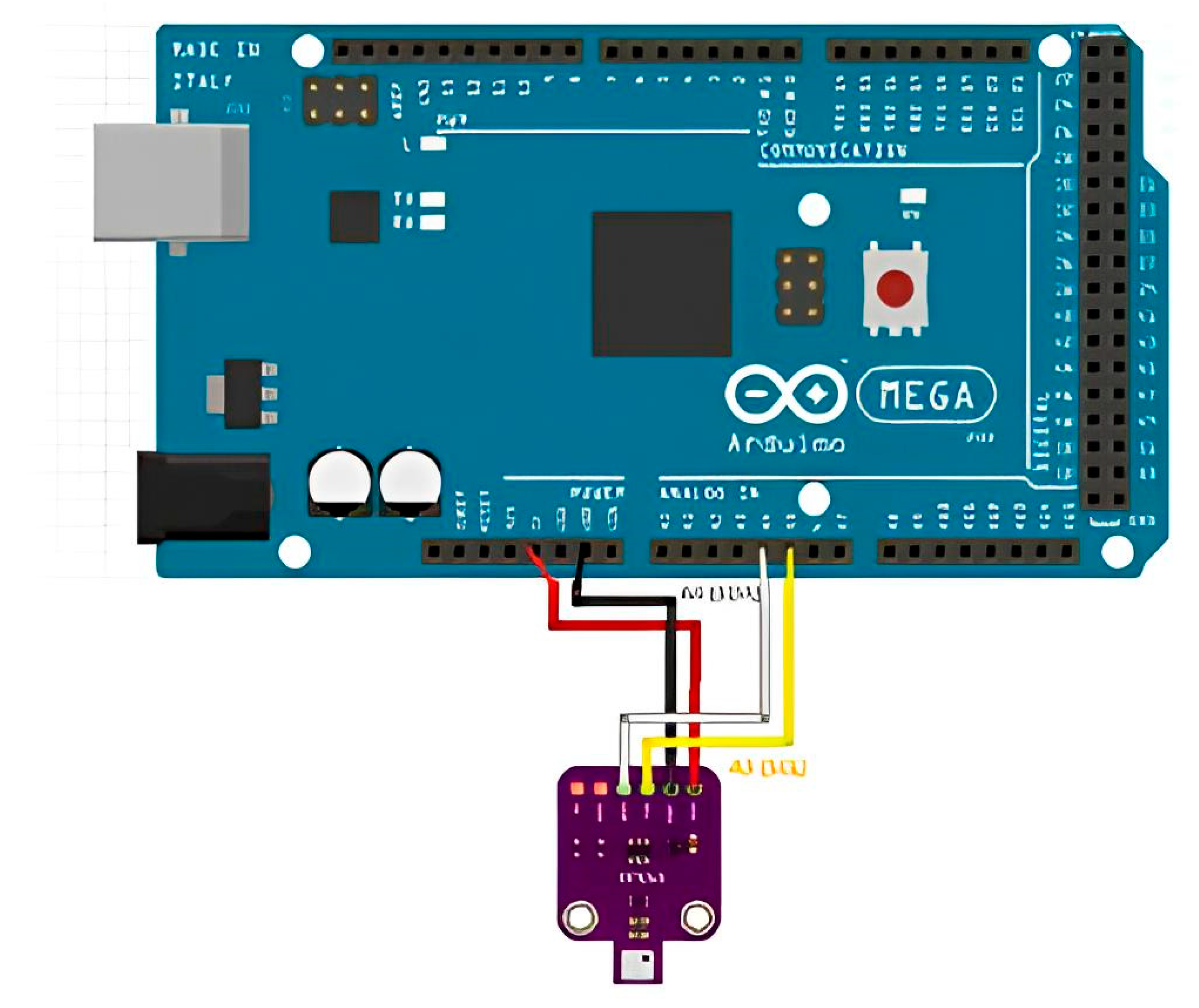







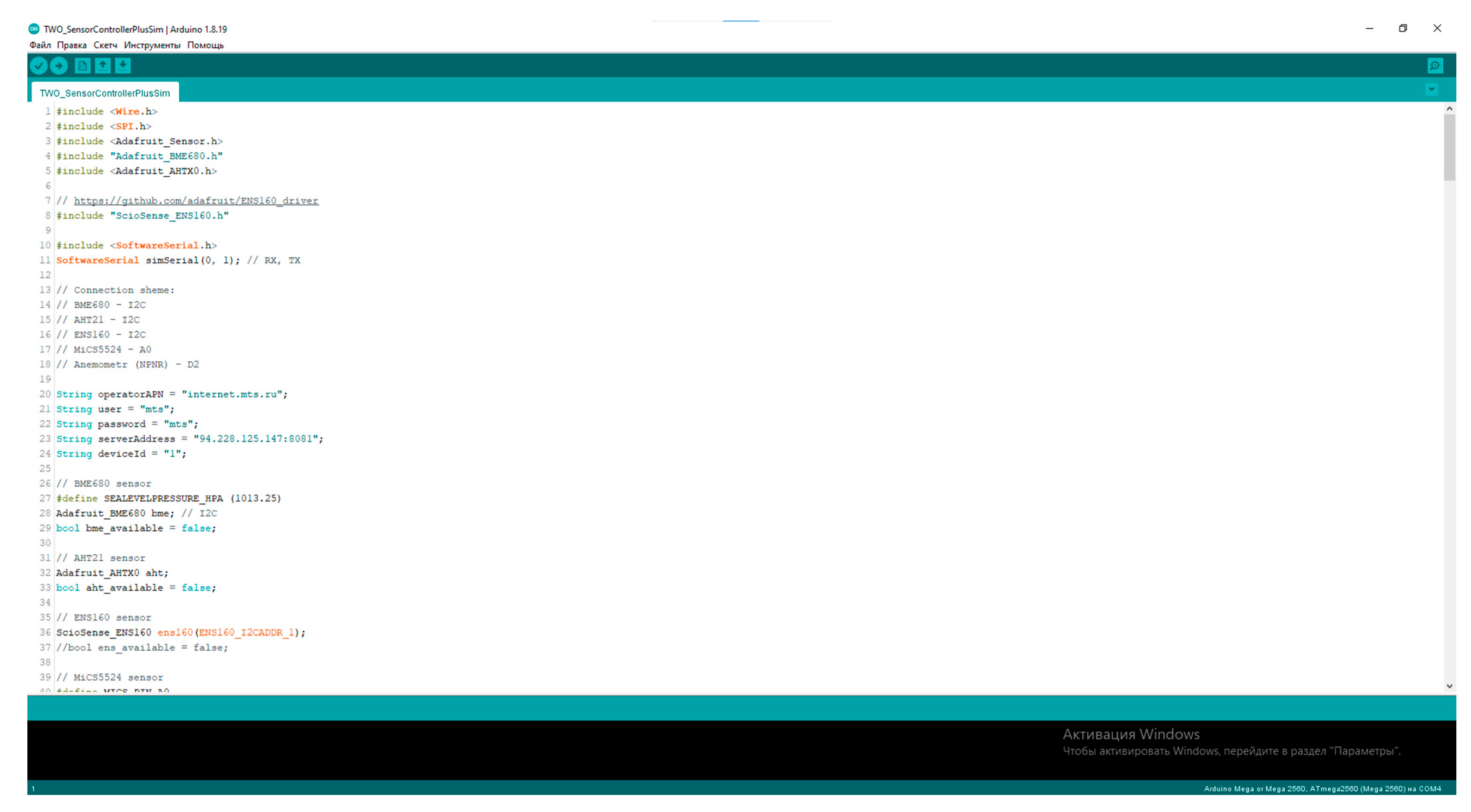

| Characteristic Name | LI-7500DS | LI-7200RS |
|---|---|---|
| Type of gas analyzer | non-dispersive infrared open gas analyzer | non-dispersive infrared spectroscopy |
| Operating temperature range | from −25 to 50 °C | from −25 to +50 °C |
| Range of measured concentrations (CO2) | from 0 to 3000 ppm mol | from 0 to 3000 ppm mol |
| Range of measured concentrations (H2O) | from 0 to 60 mmol/mol | from 0 to 60 mmol/mol |
| Uncertainty for CO2 | 1% | In the range of 1% |
| Uncertainty for H2O | 1% | In the range of 2% |
| Resolution (RMS at 370 ppm CO2 and 10 ppm mol H2O) for CO2 | at 5 hertz—0.08 ppm; at 10 hertz—0.11 ppm; at 20 hertz—0.16 ppm | at 5 hertz—0.08 ppm; at 10 hertz—0.11 ppm; at 20 hertz—0.16 ppm |
| Drift (% change relative to °C) for CO2 | ±0.02% for standard, ±0.1% for maximum value | ±0.02% (typical)/±0.1% (maximum) |
| Drift (%change relative to °C) for H2O | ±0.15% for standard, ±0.30% for maximum value | ±0.15% (typical)/±0.30% (maximum) |
| Sensitivity of CO2 to H2O (mol CO2/mol H2O) | ±2.00 × 10−5 for standard, ±4.00 × 10−5 for maximum value | ±2.00 × 10−5 (typical)/±4.00 × 10−5 (maximum) |
| Sensitivity of H2O to CO2 (mol H2O/mol CO2) | ±0.02 for standard, ±0.05 for maximum value | ±0.02 (typical)/±0.05 (maximum) |
| Power supply | 10.5–30 volt DC | 10.5–30 volt DC |
| Specification | N2O | CH4 | CO2 | NH3 | H2O |
|---|---|---|---|---|---|
| Accuracy (1σ) | <25 ppb + 0.05% of reading Typical = 5.0 ppb | <10 ppb + 0.05% of reading Typical = 0.3 ppb | <600 ppb + 0.05% of reading Typical = 240 ppb | <5 ppb + 0.05% of reading Typical = 0.16 ppb | <500 ppm |
| Accuracy 1 min (1σ) | <10 ppb + 0.05% of reading Typical = 1.1 ppb * | <7 ppb + 0.05% of reading Typical = 0.1 ppb * | <300 ppb + 0.05% of reading Typical = 74 ppb * | <3 ppb + 0.05% of reading Typical = 0.07 ppb * | <250 ppm |
| Measurement range | 0–400 ppm | 0–15 ppm | 0.02–2% | 0–2 ppm | 0–7% |
| Response time | <8 s | <8 s | <8 s | <8 s | <8 s |
| Sensor | CJMCU-811 | ENS160 + AHT21 | GY-SGP30 |
|---|---|---|---|
| Appearance | 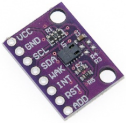 | 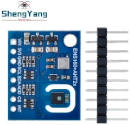 |  |
| Interface | I2C | I2C и SPI | I2C |
| Supply voltage, V | 1.8…3.3 | 1.7–2 | 1.8…5 |
| Consumed current, mA | Up to 30 | 10–85 | 48 mA in measurement mode up to 10 nA in sleep mode |
| Dimensions, mm | 14 × 20 | 19.2 × 24 | 13 × 10.5 × 2.6 |
| Ambient temperature range, °C | −40 to +85 | −40 to +85 | −40 to +85 |
| Ambient humidity range, %RH | from 5 to 95 | from 5 to 95 | from 5 to 95 |
| Pressure Sensors | BMP280 | LPS22HB | BME680 |
|---|---|---|---|
| Appearance |  |  |  |
| Interface | SPI/I2C | SPI/IIC | SPI/I2C |
| Operating voltage, V | 3.3–5 | 1.7–3.6 B | 1.7–3.6 |
| Pressure range, hPa | 300–1100 | 260–1260 | 300–1100 |
| Relative accuracy, hPa | ± 12 | - | - |
| Temperature range, °C | −40 to + 85 | −40 to + 125 | −40 to + 85 |
| Humidity, % | 100 | 0–95 | 0–100 |
| Parameters | MH-Z14A NDIR CO2 Sensor | IRC-A1 | CM1107N | MSH-DS/HC/CO2 | INP-20-CO2 T-NC |
|---|---|---|---|---|---|
| Sensor type | optical | optical | optical | optical | optical |
| Measurement range | 0–10,000 ppm | 0–5000 ppm 0–5% volume 0–20% volume 0–100% volume | 0–5000 ppm | 0–2% volume | 0–20% volume |
| Interface | UART | UART | UART | UART | UART |
| Response time, s | 120 | 40 | 30 | 30 | 30 |
| Working conditions | 0–50 °C | −20–55 °C | −10–50 °C | −20–50 °C | 5–50 °C |
| Error | ±(50 ppm + 3% reading value) | ±1…4% | ±(30 ppm + 3% of reading) | ±2% | ±1% of reading value |
| Manufacturer | WINSEN, PRC | Alphasense, UK | Cubic, PRC | Dynament, UK | NET, Italy |
| Parameters | MSH-P/HCP | Eu-M-CH4-OD | F3-042107-05000 | Gasboard-2500 |
|---|---|---|---|---|
| Sensor type | optical | optical | optical | optical |
| Measurement range | 0–5%, 0–100% volume | 0–2.5% oб. | 0–10% oб. | 0–5% V |
| Interface | UART | UART | RTU | UART |
| Response time, sec | 30 | 30 | 1 | 20 |
| Working conditions | −20–50 °C | −40–50 °C | 0–50 °C | −25–55 °C |
| Error | ±2% | ±1% | 0.001 Vol.-% | ±1% |
| Manufacturer | Dynament, UK | InformAnalytics, Russia | Smartgas, Germany | Cubic, PRC |
| Anemometer | SM5386V | BGT-FS1 RS485 | RK100-02 |
|---|---|---|---|
| Appearance |  |  | 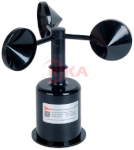 |
| Output mode | RS485/0–5 V/0–10 V | 0~5 V; 1~5 V; 0~2.5 V | 5 V, 12−24 V |
| Starting wind speed, m/s | 0.1 | ≤0.5 m/s | <0.5 m/s |
| Range, m/s | 0–30 | 0~45/0~70 | 0~45 |
| Error, m/s | ± 0.5 | ± (0.3 + 0.03 V) | ±(0.3 + 0.03 V) |
| Working environment humidity RH, % | 0–95 | ≤100 | 20–90 |
| Operating temperature, °C | −40~85 | −35~60 | −40~50 |
| Power, W | 1/4 |
Disclaimer/Publisher’s Note: The statements, opinions and data contained in all publications are solely those of the individual author(s) and contributor(s) and not of MDPI and/or the editor(s). MDPI and/or the editor(s) disclaim responsibility for any injury to people or property resulting from any ideas, methods, instructions or products referred to in the content. |
© 2023 by the authors. Licensee MDPI, Basel, Switzerland. This article is an open access article distributed under the terms and conditions of the Creative Commons Attribution (CC BY) license (https://creativecommons.org/licenses/by/4.0/).
Share and Cite
Kulakova, E.; Muravyova, E. Technical Solution for Monitoring Climatically Active Gases Using the Turbulent Pulsation Method. Sensors 2023, 23, 8645. https://doi.org/10.3390/s23208645
Kulakova E, Muravyova E. Technical Solution for Monitoring Climatically Active Gases Using the Turbulent Pulsation Method. Sensors. 2023; 23(20):8645. https://doi.org/10.3390/s23208645
Chicago/Turabian StyleKulakova, Ekaterina, and Elena Muravyova. 2023. "Technical Solution for Monitoring Climatically Active Gases Using the Turbulent Pulsation Method" Sensors 23, no. 20: 8645. https://doi.org/10.3390/s23208645








